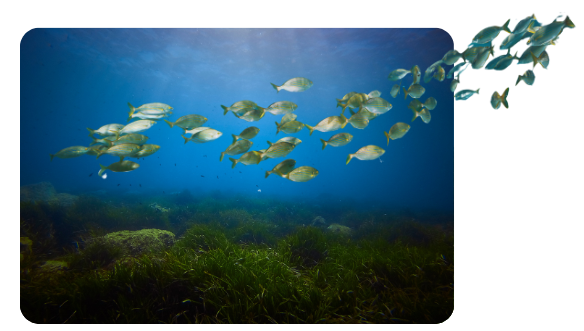Story
Pioneering use of AI exposes the extent of microplastics in Arctic zooplankton
08 April 2022
A PML-led study and international collaboration with Germany’s Alfred Wegener Institute which utilizes artificial intelligence (AI) to identify microplastics ingested by several species of Arctic zooplankton has highlighted the reach and scale of the plastics issue facing the marine environment.

Dr Zara Botterell, a PhD researcher with the University of Essex, based permanently at Plymouth Marine Laboratory, investigated a range of samples collected during 2018 and 2019 in the Fram Strait, which is located between Greenland and Svalbard, and is known to have some of the highest microplastic concentrations in marine environments.
Employing a novel technique which combined advanced scanning technology with an automated method of microplastic identification (in order to remove human bias), Dr Botterell’s studies showed that all five species of Arctic zooplankton investigated had ingested microplastics. Of those species, amphipods had ingested significantly more microplastics than copepods with the majority of the microplastic fragments below 50 μm (micrometers) in size.

Image above: Apherusa glacialis a sea ice-associated amphipod found throughout the Arctic Ocean. Image courtesy of Nicole Hildebrandt from the Alfred Wegener Institute (AWI).
The findings are significant as high levels of microplastic ingestion in zooplankton in laboratory studies have been associated with negative effects on growth, development, and capacity for reproduction. As Arctic zooplankton only have a short window of biological productivity and are a vital food source for many species, any negative effects could have broad consequences on the entire marine food web.
Furthermore, as global plastic consumption continues to increase and climate change continues to reduce sea ice cover, releasing ice-bound microplastics and leaving ice-free areas open to exploitation, the Arctic could be exposed to exponential plastic pollution, placing additional strain on this fragile ecosystem.
Dr Botterell’s research paper “Microplastic ingestion in zooplankton from the Fram Strait in the Arctic’ has been published in the journal “Science of the Total Environment’ – an international multi-disciplinary journal for the publication of novel, hypothesis-driven and high-impact research on the total environment (which interfaces the atmosphere, lithosphere, hydrosphere, biosphere, and anthroposphere). Read it in full at: https://www.sciencedirect.com/science/article/pii/S0048969722019799
Dr Botterell said:
“Understanding the factors behind microplastic ingestion is an important step to understanding the risk threshold to a species, population, and an ecosystem. As the Arctic continues to warm due to climate change, increasing quantities of ice-bound microplastics will be released and ice-free areas will be open to further plastic pollution. We know that microplastics have detrimental effects on zooplankton which form the base of the marine food chain. Using AI techniques to identify their presence in the samples I investigated has enabled even more clarity on the scale of the plastics issue. It provides a valuable snapshot of current microplastic ingestion in the remote Fram Strait region which provides important data for exposure scenarios and will hopefully enable and inform greater understanding of the future risks presented by microplastics at a broader scale.”

Image above: Scientists winching plankton sampling nets during one of the research cruises. Photo courtesy of Melanie Bergman from the Alfred Wegener Institute (AWI).
